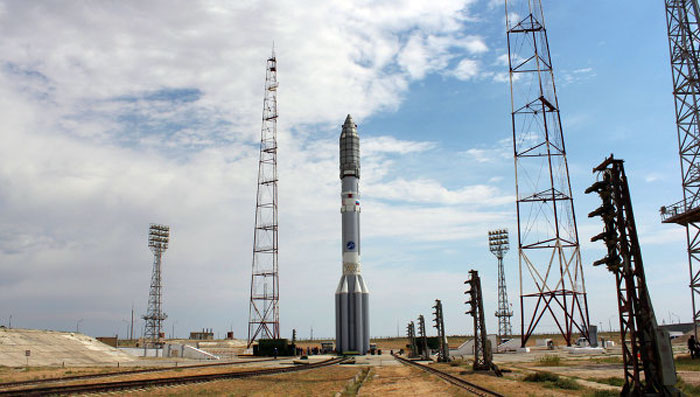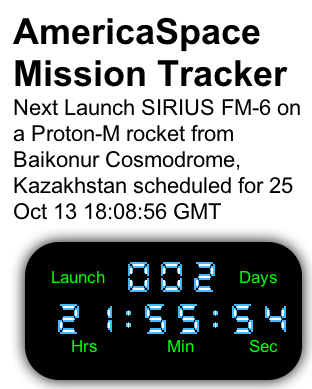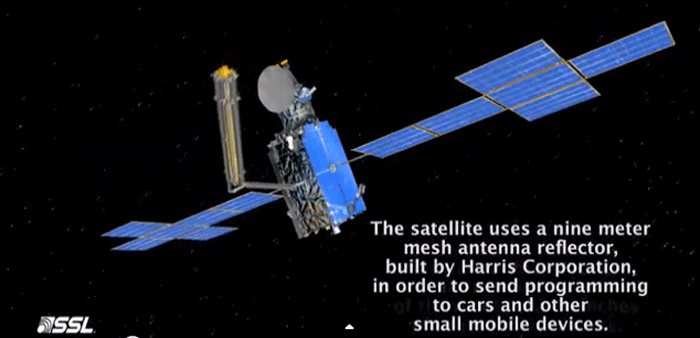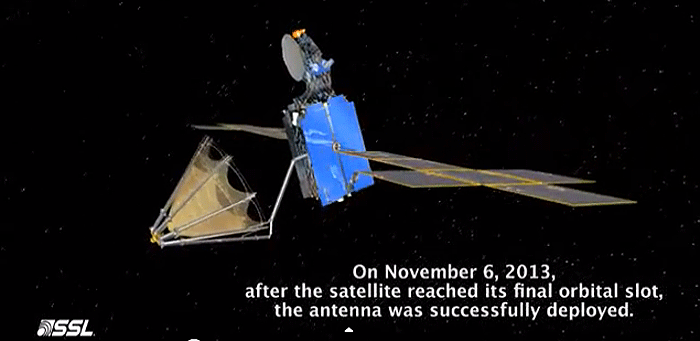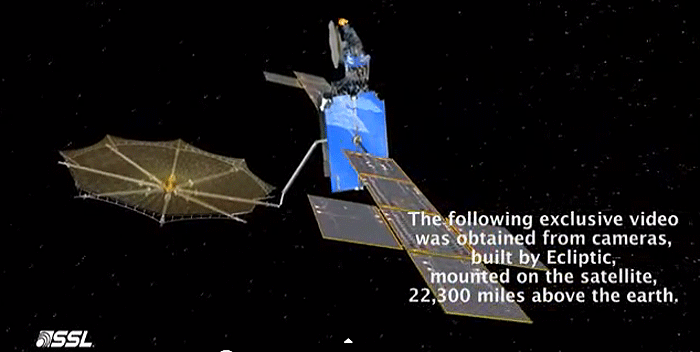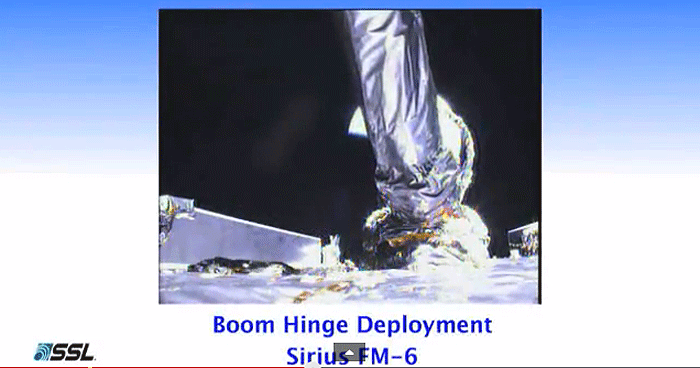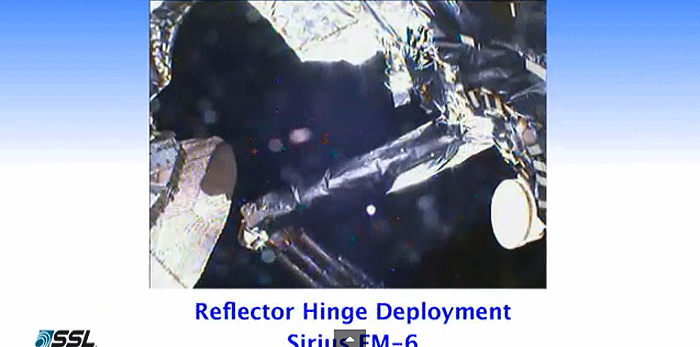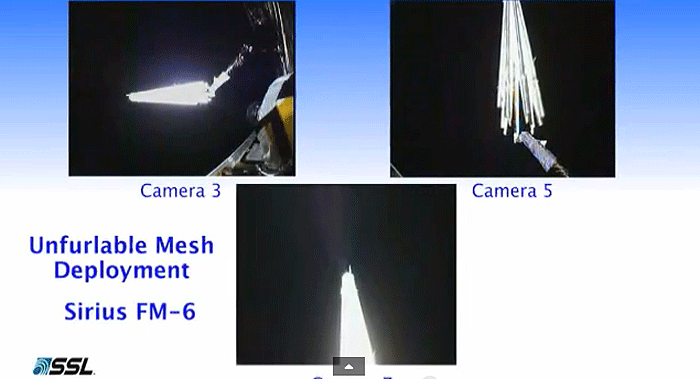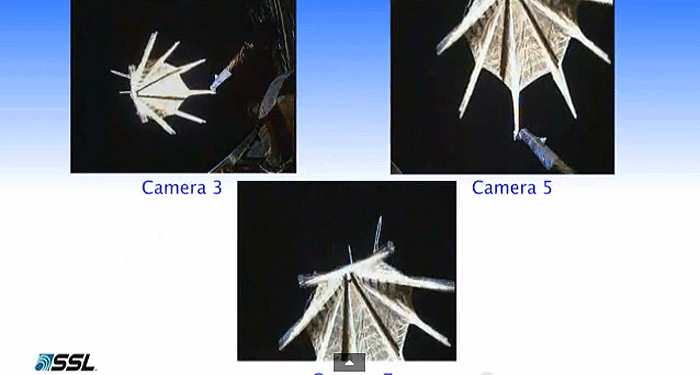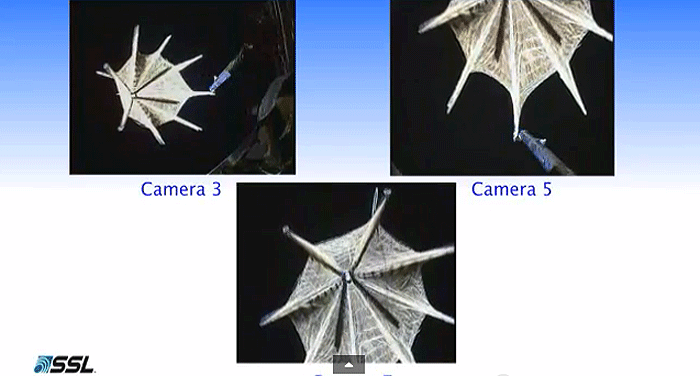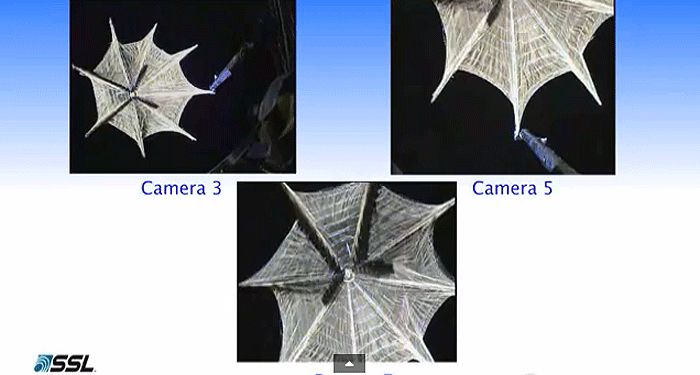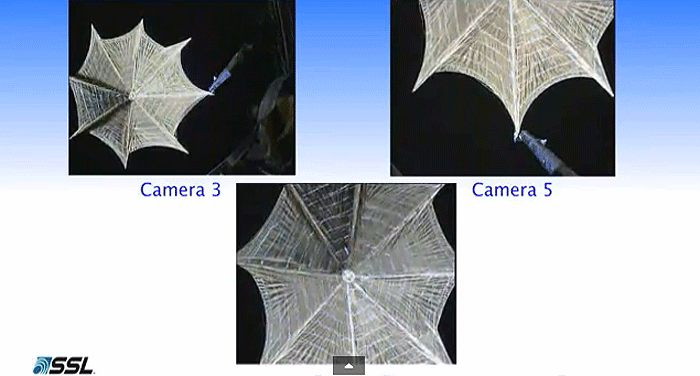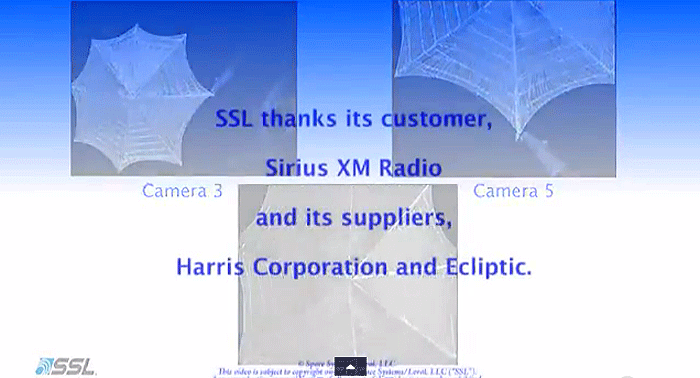.
A Proton-M carrier rocket with a US telecoms satellite will be transported early Thursday to a launch pad at the Baikonur space center in Kazakhstan in preparation for launch on October 20, Russia’s space agency Roscosmos said.
According to Roscosmos, the Proton rocket with a Briz-M booster and the Sirius FM-6 satellite has been cleared for the launch by a special state commission on Wednesday.
It will be a second Proton mission after a launch failure in July when a Proton-M rocket carrying three satellites for the Glonass positioning system, Russia’s answer to the GPS, crashed in a ball of flames, seconds after blasting off from Baikonur.
During the first launch on September 30, following a three-month suspension, a Proton-M successfully orbited the Astra 2E telecoms satellite, manufactured in France for Luxembourg-based SES S.A. satellite operator.
Sirius FM-6 is a high-power geostationary satellite built by Space Systems/Loral for SiriusXM, America’s largest radio broadcaster measured by revenue and one of the world’s largest pure-play audio entertainment companies.
The 6-ton satellite, which has a service life of 15 years, “will help with the delivery of commercial-free music, and premier sports, news, talk, entertainment and Latin programming, traffic and weather to more than 25 million subscribers,” according to International Launch Services (ILS), the operator of Proton launches.
.
Sirius Rising: Proton-M Ready to Launch Digital Radio Satellite Into Orbit
.

International Launch Services (ILS)—a joint U.S.-Russian company, headquartered in Reston, Va.—is ready to fly its second Proton-M mission in three weeks, with a nighttime liftoff scheduled to take place from Pad 39 at Site 200 at the Baikonur Cosmodrome at 12:12:56 a.m. local time on Monday, 21 October (2:12:56 p.m. EDT on Sunday, 20 October) to deliver the Sirius FM-6 digital radio satellite into geostationary transfer orbit. Coming hard on the heels of ILS’s spectacular 29 September Return to Flight mission, this launch will help to restore confidence in the mighty Proton, which suffered a dramatic failure in July, seconds after leaving the pad.
Aside from the Proton’s woes in 2013, the launch of Sirius FM-6 has met with significant delay thanks to technical difficulties with the satellite itself. Originally targeted to fly in early 2012, it has spent almost two years on the ground, following concerns about a possible solar array defect. A short-lived glitch with the array deployment mechanism on the SES-4 satellite—a spacecraft of similar design and construction—prompted a decision to return Sirius FM-6 to prime contractor Space Systems/Loral’s (SS/L) facility in Palo Alto, Calif., for additional work. Launch was eventually rescheduled for 20 July 2013, but was further postponed after the 2 July explosion of a Proton-M.
Preparations resumed in earnest in early September, when Sirius FM-6 was delivered to Baikonur for final pre-launch processing. The satellite is assembled around SS/L’s LS-1300 “bus,” which was originally introduced in the 1980s and in its current incarnation can provide 5-25 kW of continuous electrical power throughout a project 15-year orbital lifespan. Lightweight and high-strength in construction, the LS-1300 can support as few as 12 and as many as 150 transponders. After insertion into orbit, Sirius satellites receive “Radiosat” designations to differentiate from a Swedish network of communications satellites, which are also known as Sirius.
Quelle: AmericaSpace
.
Update: 20.10.2013
.
The US asked to delay today’s launch of a Russian Proton rocket carrying an American commercial satellite after problems with one of its communications centers, a space agency official said Sunday.
The launch has been delayed until Monday because a US communications station in South Africa isn’t working properly, said Sergei Gorbunov, a spokesman for Roscosmos, Russia’s federal space agency.
The Proton-M rocket was scheduled to blast off tonight at 10.13 p.m. Moscow time from Russia’s Baikonur Cosmodrome in Kazakhstan.
It’s set to carry a Sirius FM-6 satellite into space, bolstering the US broadcasting giant’s satellite fleet already transmitting radio across North America.
Quelle: ILS
.
Update: 21.10.2013
.
New Delay Hits Russian Launch of US Satellite
.
The launch of a Russian Proton-M rocket carrying a US telecoms satellite has been postponed for a second time on the satellite operator’s request, the Russian space agency said Monday.
The new launch is tentatively scheduled for Friday, a spokesman for the Federal Space Agency told RIA Novosti.
The Proton-M rocket was set to blast off from the Baikonur space station in Kazakhstan carrying the Sirius FM-6 satellite late Sunday, but its launch was postponed until Monday.
The delay is due to the operator’s problems with one of its communications stations, located in South Africa, a Federal Space Agency spokesman said.
The Sirius FM-6, which has a life expectancy of 15 years, will provide radio broadcasts for North American audiences.
Proton-M launches were suspended for three months following a crash in July, blamed on a manufacturing error. The unmanned rocket flew again in late September, successfully taking a French telecoms satellite into orbit.
Quelle: RIA NOVOSTI
.
Update: 22.10.2013
.
Launch of SIRIUS FM-6 on a Proton-M rocket from Baikonur Cosmodrome, Kazakhstan launch complex 39 Site 200
Launch scheduled for 25 Oct 13 18:08:56 GMT
Local Time : 26 Oct 13 0:08:56 ALMT
An International Launch Services Proton M launch vehicle, utilizing a 5-burn Breeze M mission design, will lift off from Pad 39 at Baikonur
Cosmodrome, Kazakhstan, with the Sirius FM-6 satellite on board. The first three stages of the Proton will use a standard ascent profile to place the orbital unit (Breeze M upper stage and the Sirius FM-6 satellite) into a sub-orbital trajectory.
From this point in the mission, the Breeze M will perform planned mission maneuvers to advance the orbital unit first to a circular parking
orbit, then to an intermediate orbit, followed by a transfer orbit, and finally to a geostationary transfer orbit.
Separation of the Sirius FM-6 satellite is scheduled to occur approximately 9 hours, 11 minutes, and 20 seconds after liftoff.
.
Quelle: AS
.
Upadte: 24.10.2013
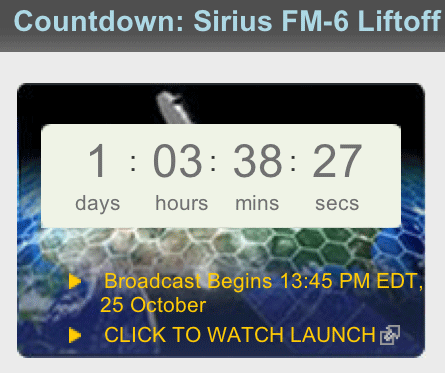
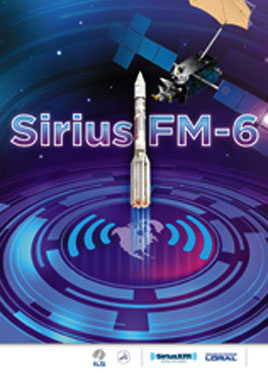
Quelle: ILS
.
Update: 25.10.2013
.
Next Proton-M launch scheduled for October 26
WASHINGTON, October 24. (Itar-Tass) – Launch of the Russian Proton-M carrier rocket with the American Sirus FM-6 payload from Baikonur cosmodrome is scheduled for October 26, according to the statement made by the U.S. company International Launch Services (ILS); a Russia’s state-owned Khrunichev Space Research and Development Center is a major stakeholder in the organization.
The launch was rescheduled twice due to malfunction of American terrestrial receiving stations, which are required to process data in order to successfully deploy the Sirius FM-6 telecom satellite.
ILS is based in Reston, Virginia. It’s goal is to promote services of the Proton carrier rocket and the Briz-M upper stage rocket which were developed by the Khrunichev Center. The joint company was created in 1995 together with Lockheed-Martin, and Korolev Rocket and Space Corporation Energiya.
In 2006 Lockheed-Martin sold its share to a German entrepreneur; it was later bought out by the Khrunichev Center. The ILS has conducted over 80 Proton launches since 1996.
Quelle: ITAR TASS
.
Update: 28.10.2013
.
Russian Proton-M Lifts Off With US Telecoms Satellite
.
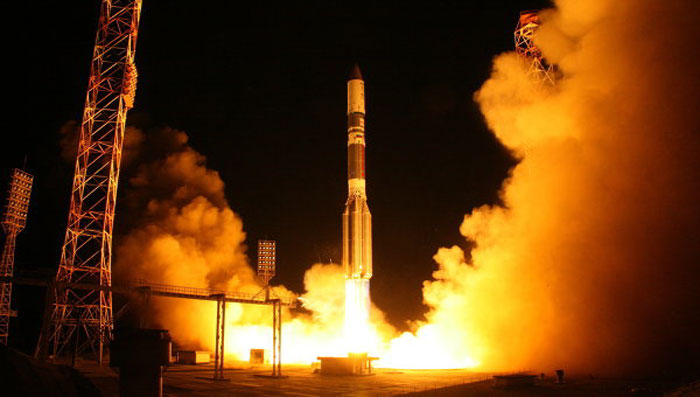
MOSCOW, A Russian Proton-M rocket carrying a US telecoms satellite lifted off on Friday from the Baikonur space center in Kazakhstan, said a spokesman for the Russian space agency Roscosmos.
The launch was originally scheduled for October 20, but was twice delayed on the request of the US space agency NASA because a US communications station in South Africa was not working properly.
“The separation of the satellite from the Briz-M upper stage is expected at 7:19 a.m. Moscow time (3 a.m. GMT),” Sergei Gorbunov said.
Sirius FM-6 is a high-power geostationary satellite built by Space Systems/Loral for SiriusXM, America’s largest radio broadcaster by revenue and one of the world’s largest pure-play audio entertainment companies.
The six-ton satellite, which has a service life of 15 years, “will help with the delivery of commercial-free music and premier sports, news, talk, entertainment and Latin programming, traffic and weather to more than 25 million subscribers,” according to International Launch Services (ILS), the operator of Proton launches.
Quelle: RIA Novosti
.
BAIKONUR COSMODROME, Kazakhstan, October 26, 2013 – International Launch Services (ILS), a leader in providing mission integration and launch services to the global commercial satellite industry, successfully carried the Sirius FM-6 satellite, built by SSL, into orbit today on an ILS Proton for Sirius XM Radio Inc.
The ILS Proton Breeze M vehicle launched from Pad 39 at the Baikonur Cosmodrome at 00:09 today local time (18:09 GMT and 14:09 EDT on October 25). The first three stages of the Proton used a standard ascent profile to place the orbital unit (Breeze M upper stage and the Sirius FM-6 satellite) into a sub-orbital trajectory. From this point in the mission, the Breeze M performed planned mission maneuvers to advance the orbital unit first to a circular parking orbit, then to an intermediate orbit, followed by a transfer orbit, and finally to a geostationary transfer orbit. Separation of the Sirius FM-6 satellite occurred approximately 9 hours and 11 minutes after liftoff. The satellite, weighing over 6 metric tons, was built on the flight-proven SSL 1300 platform. This was the 6th satellite launched by ILS Proton for SiriusXM and the 27th SSL 1300 satellite launched.
Sirius FM-6 has an X-band uplink transponder and an S-band downlink transponder to deliver digital audio radio service. With approximately 20 Kw end-of-life power and an anticipated service life of 15 years, the Sirius FM-6 satellite is one of the most powerful satellites built today. The final orbital location for the satellite will be 116.15 degrees west longitude.
This was the 390th launch for Proton since its maiden flight in 1965 and the 83rd ILS Proton Launch overall. The Proton Breeze M vehicle is developed and built by Khrunichev Research and Production Space Center of Moscow, Russia’s premier space industry manufacturer and majority shareholder in ILS.
Phil Slack, president of ILS commented, “For over a decade, SiriusXM has entrusted ILS Proton to deliver their satellites into orbit. It is a tremendous honor for ILS to have been a part of the satellite radio industry since 2000, with the launch of SiriusXM’s first generation fleet on ILS Proton within a 5 month period. Thank you to all of the teams that made this successful launch possible, including SiriusXM, SSL, Khrunichev, and ILS.”
Quelle: ILS
.
Update: 3.03.2014
.
A 7-Camera Ecliptic RocketCam Video System Captures Large Antenna Deployment in Geostationary Orbit for SiriusXM and Space Systems/Loral
Pasadena, CA – March 3, 2014. A multi-camera onboard video system supplied by Ecliptic Enterprises Corporation has successfully captured the 7-hour deployment sequence for the large main antenna on the Sirius FM-6 spacecraft.
Sirius FM-6, a large commercial spacecraft built by Space Systems/Loral (SSL) for SiriusXM., was launched into geostationary orbit on October 25, 2013. The satellite uses a 9-meter mesh antenna reflector built by Harris Corporation to help ensure SiriusXM’s array of audio entertainment and data services are received by vehicles, receivers for home and business, as well as mobile devices, from more than 22,000 miles above the Earth’s surface.
Once Sirius FM-6 reached its final orbital slot, Ecliptic’s space-ruggedized and miniaturized 7-camera video system was used to observe all key antenna deployment events over a two-day period starting on November 6, 2013.
This is the third successful onboard video system supplied by Ecliptic to SSL and subsequently launched, with heritage from Ecliptic’s rugged RocketCam™ product family proven on 15 other spacecraft missions and over 100 rocket launches.
The Sirius FM-6 video system incorporates the latest in RocketCam system design, with a core avionics unit dramatically smaller and lighter—about half the size of a thick paperback novel, and 27 ounces—and yet much more capable than earlier Ecliptic video systems. Each of the cameras is about the size of a white-board marker pen, at 8 ounces each.
See a ‘highlights reel’ of the Sirius FM-6 antenna deployment:
.
Quelle: Ecliptic Enterprises Corporation
